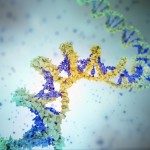Link to Pubmed [PMID] – 32734383
Link to DOI – 10.1007/s00439-020-02209-4
Hum Genet 2021 Feb; 140(2): 349-359
In an effort to characterize the people who composed the groups known as the Xiongnu, nuclear and whole mitochondrial DNA data were generated from the skeletal remains of 52 individuals excavated from the Tamir Ulaan Khoshuu (TUK) cemetery in Central Mongolia. This burial site, attributed to the Xiongnu period, was used from the first century BC to the first century AD. Kinship analyses were conducted using autosomal and Y-chromosomal DNA markers along with complete sequences of the mitochondrial genome. These analyses suggested close kin relationships between many individuals. Nineteen such individuals composed a large family spanning five generations. Within this family, we determined that a woman was of especially high status; this is a novel insight into the structure and hierarchy of societies from the Xiongnu period. Moreover, our findings confirmed that the Xiongnu had a strongly admixed mitochondrial and Y-chromosome gene pools and revealed a significant western component in the Xiongnu group studied. Using a fine-scale approach (haplotype instead of haplogroup-level information), we propose Scytho-Siberians as ancestors of the Xiongnu and Huns as their descendants.


